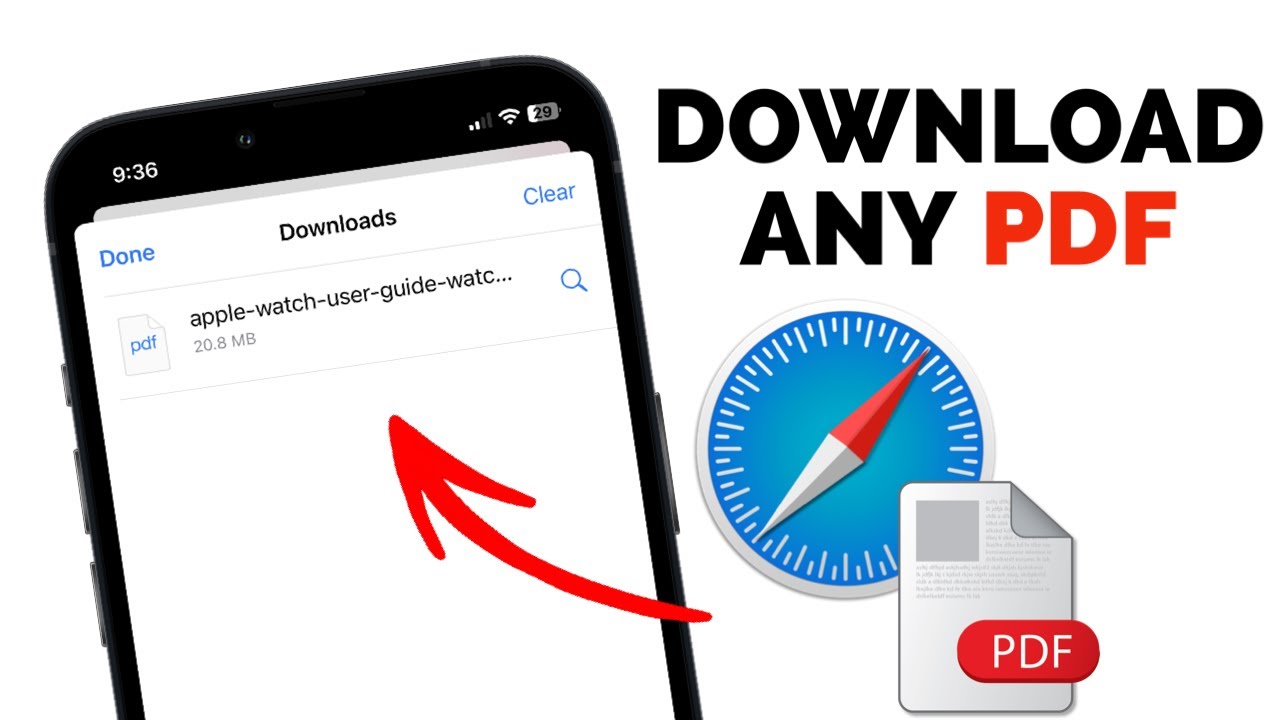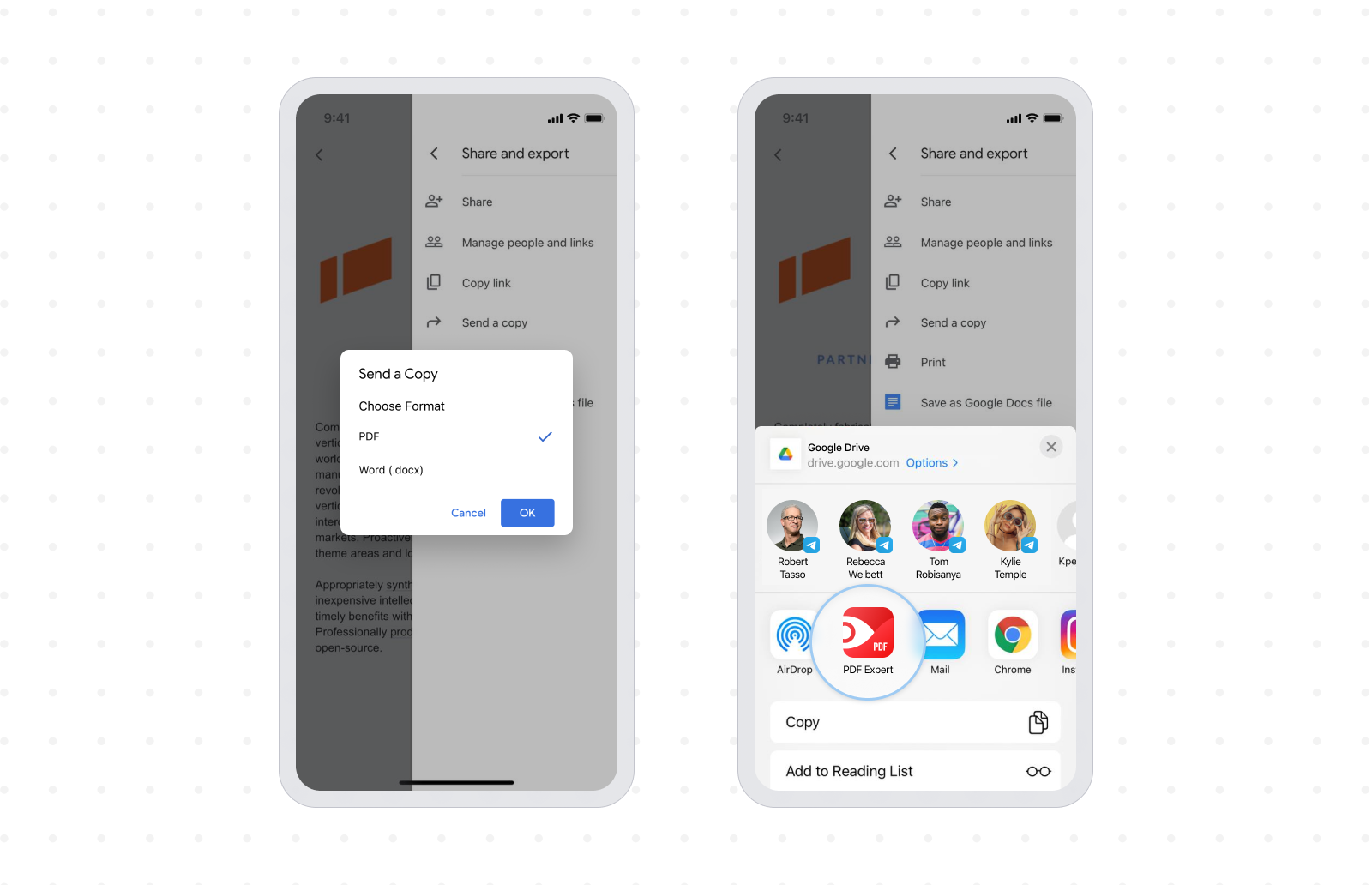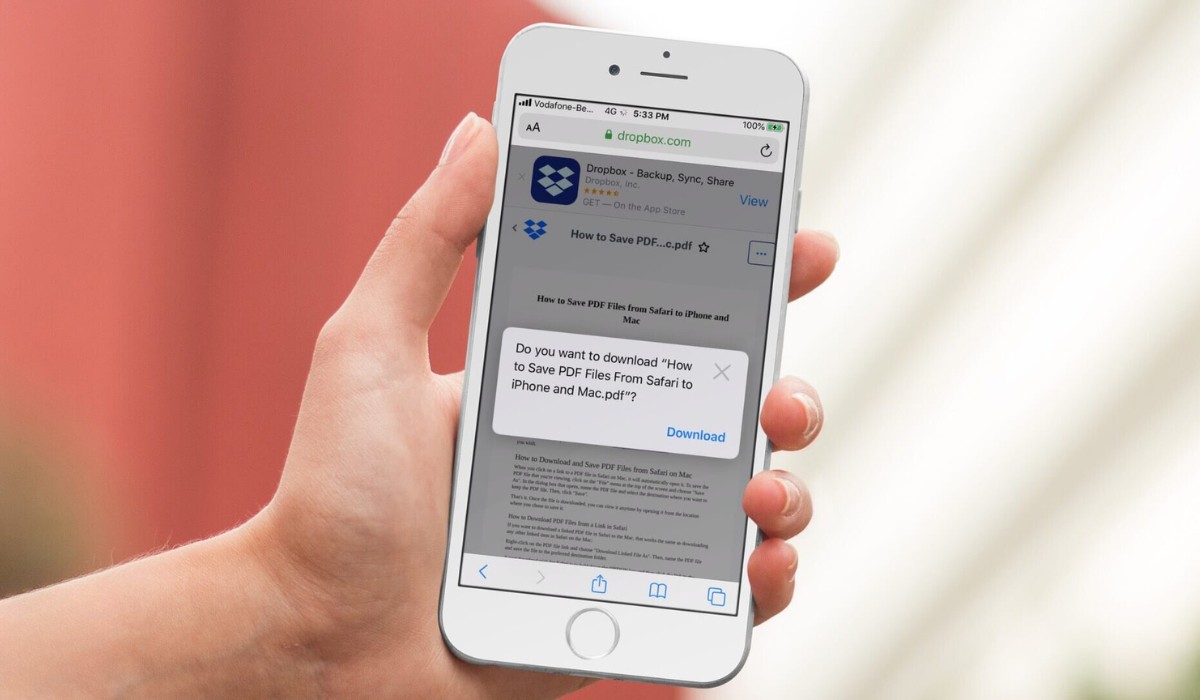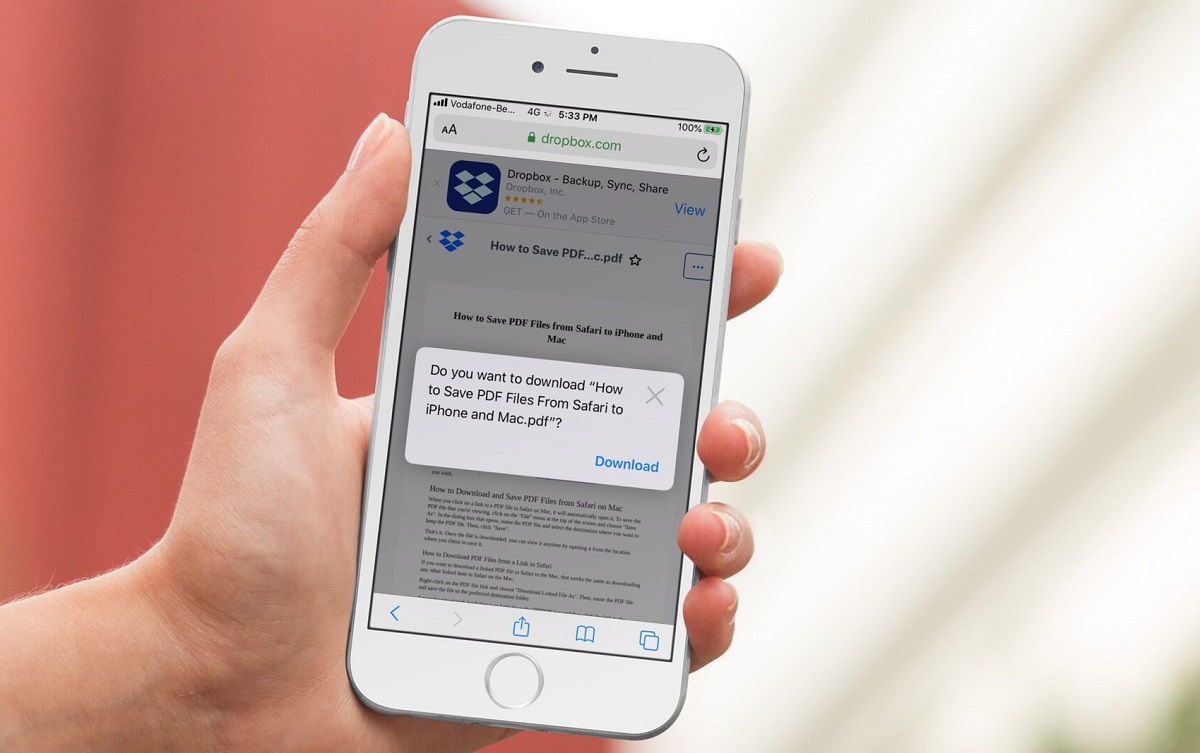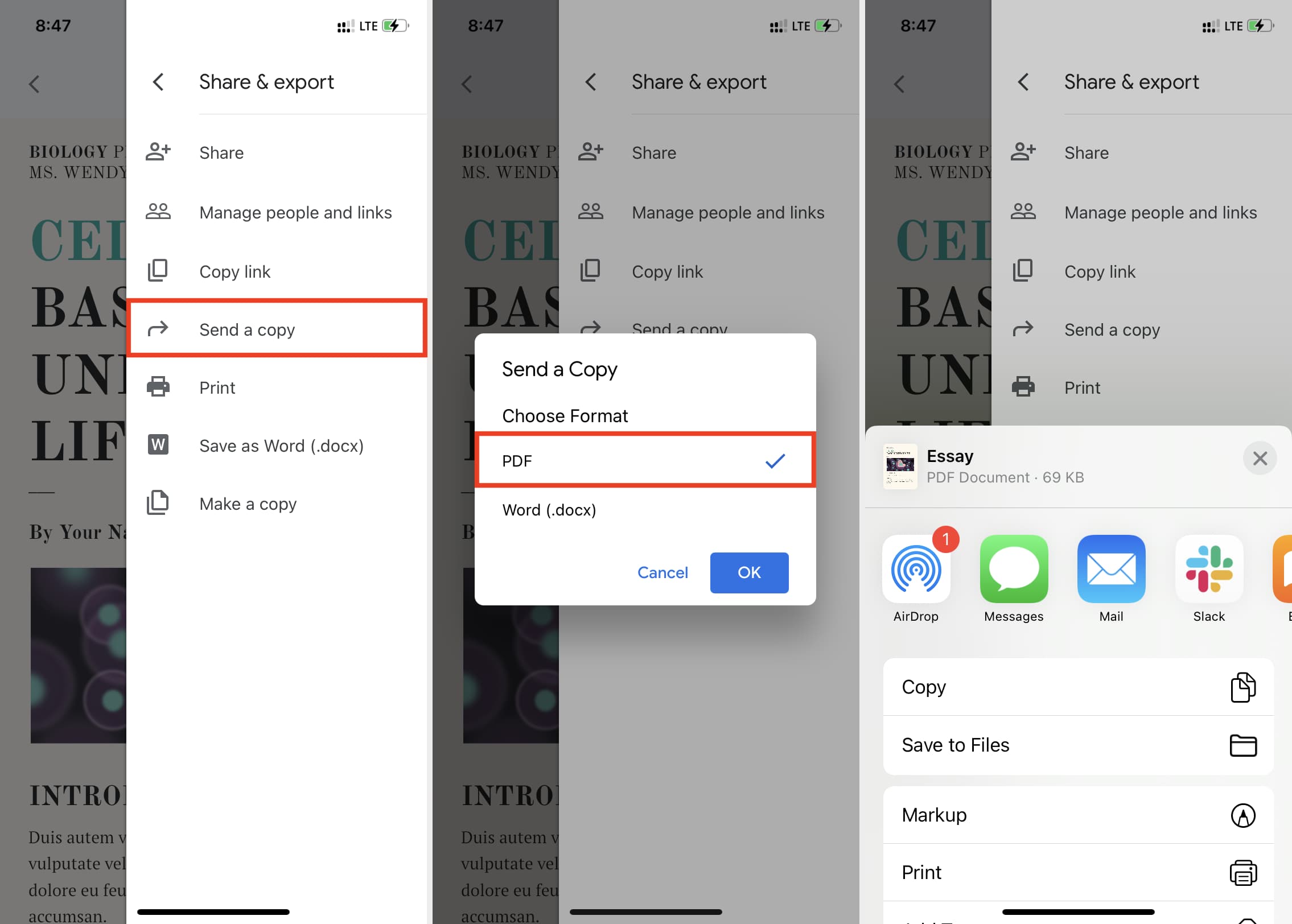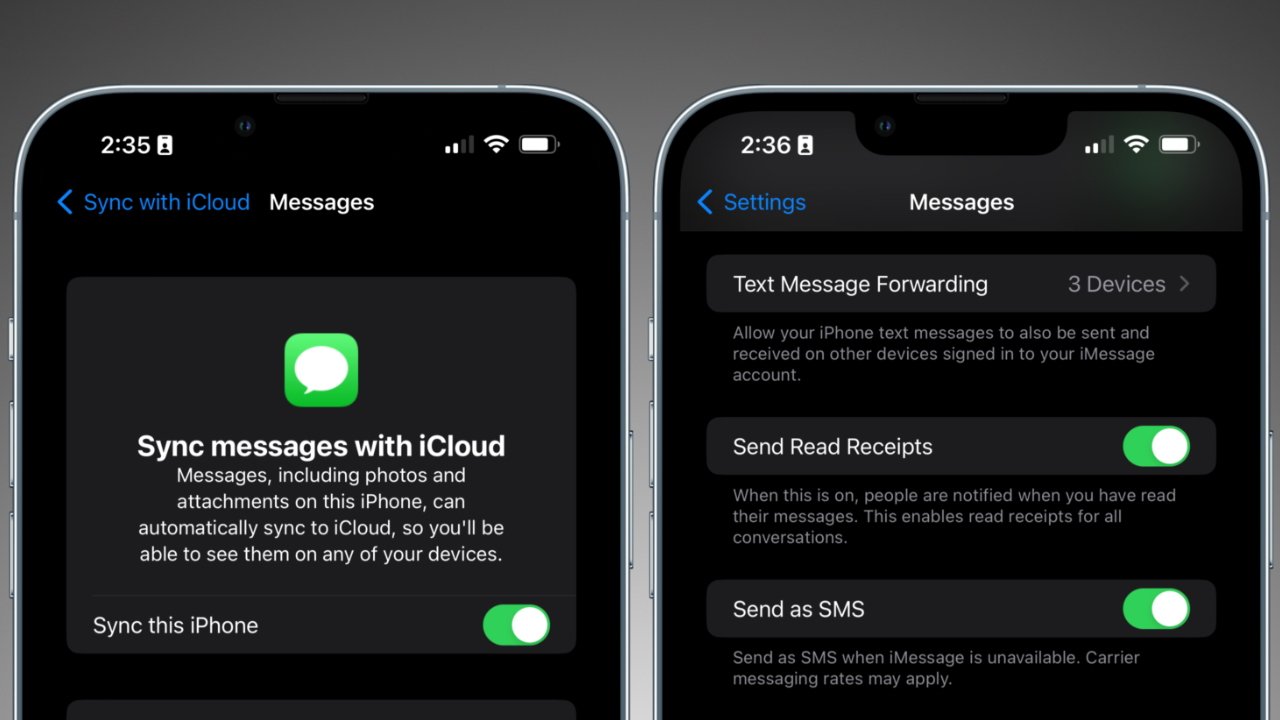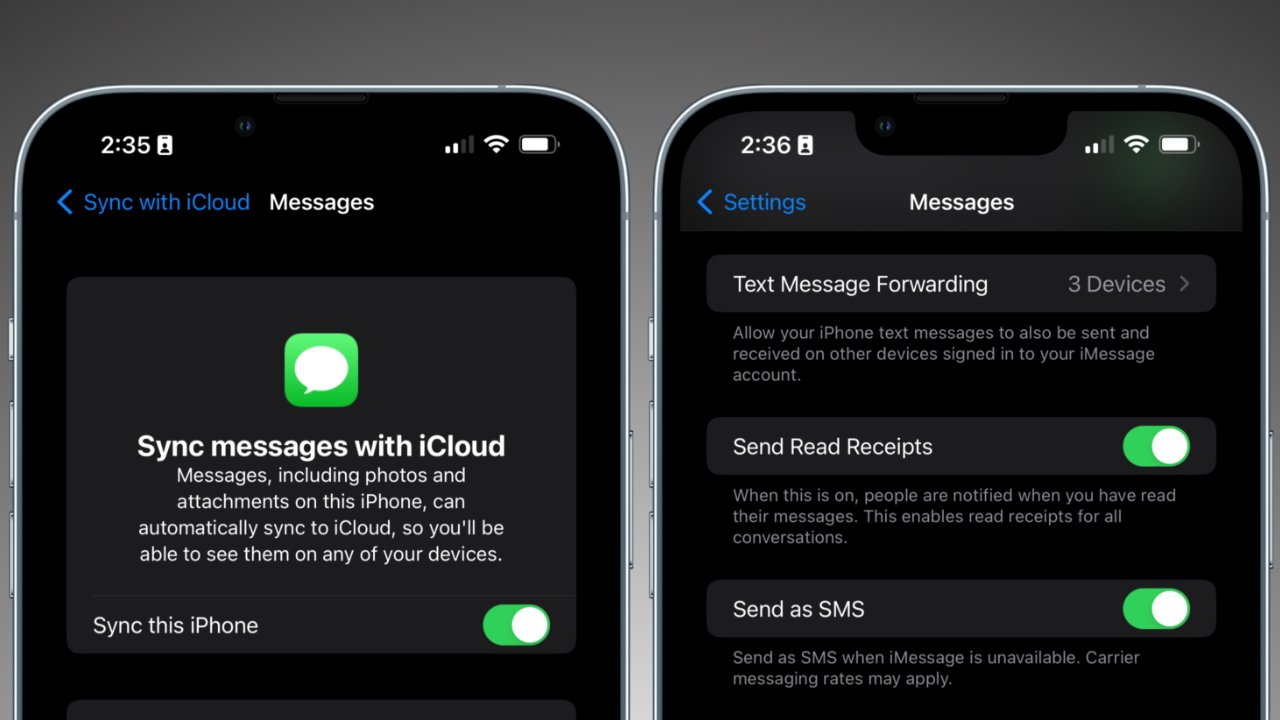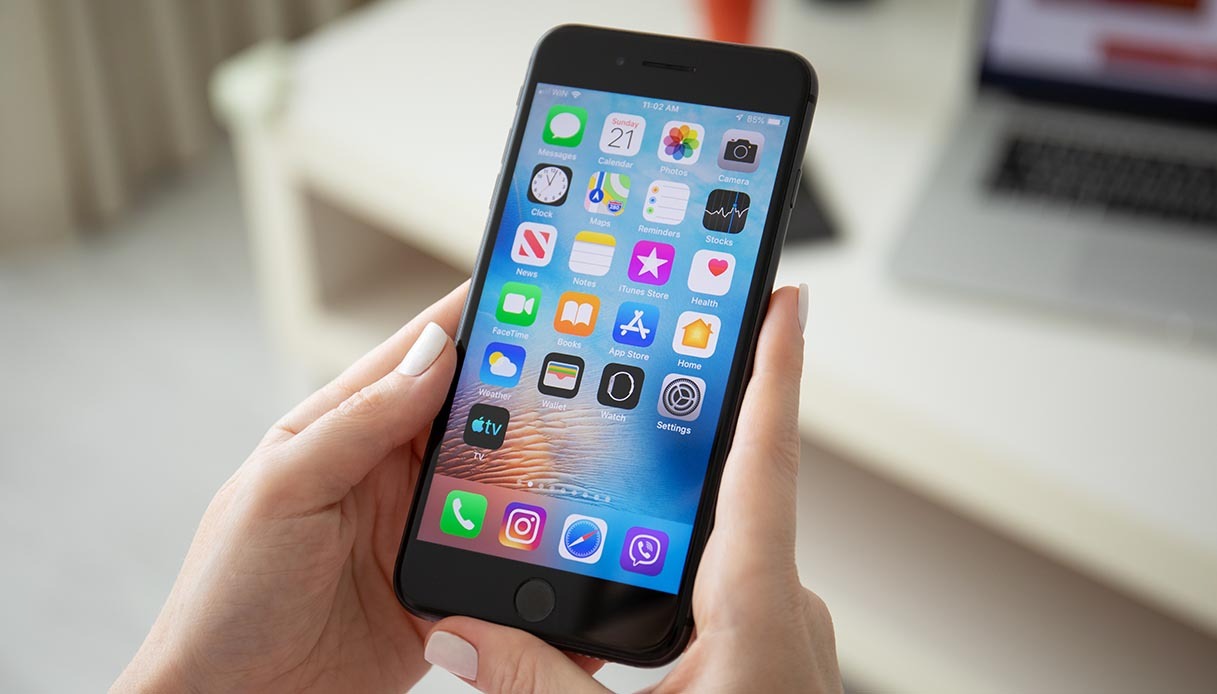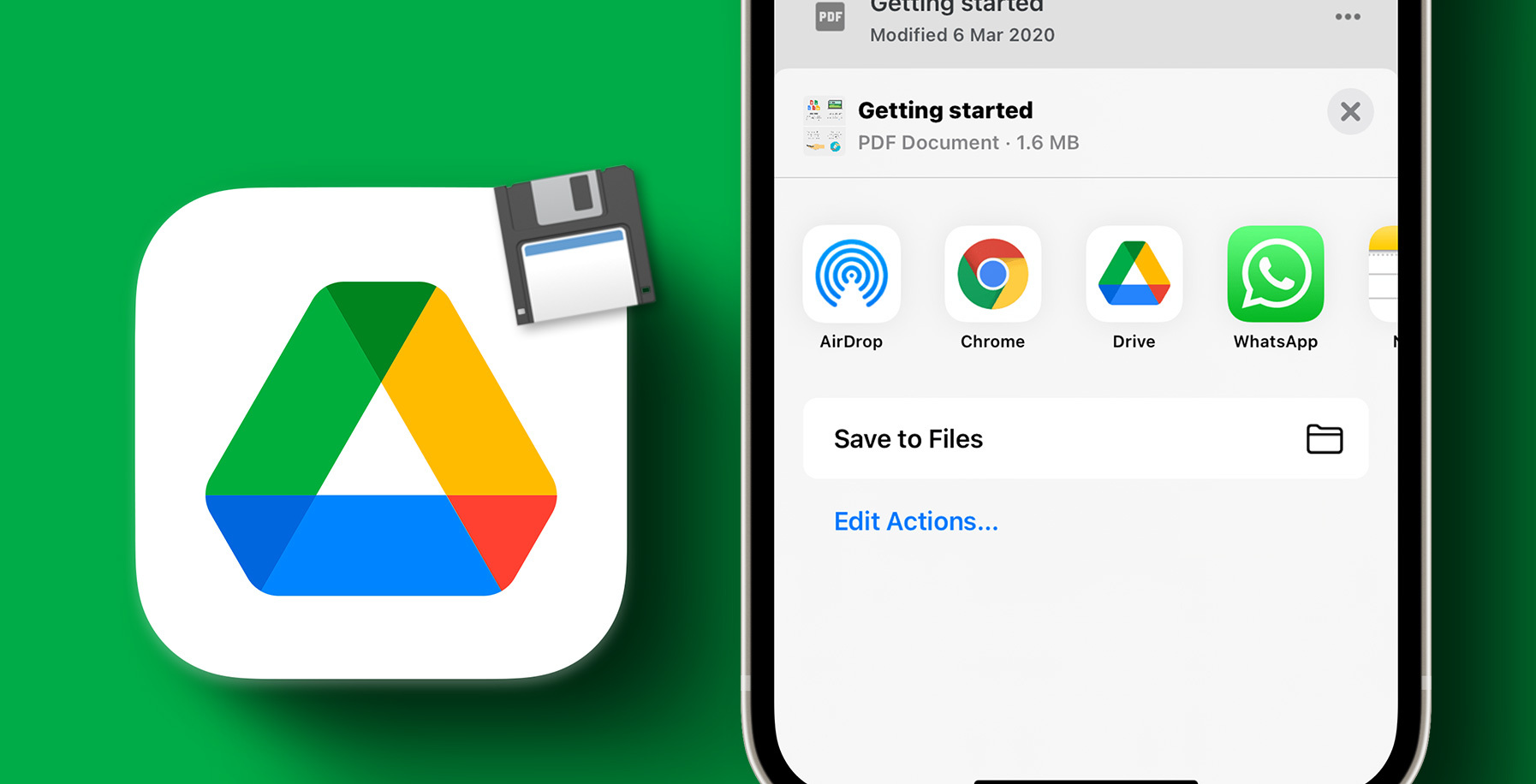Introduction
Welcome to the world of portable document format (PDF) files, where you can access and view documents with ease across devices. If you’re an iPhone user, you’re in luck because downloading and viewing PDF files on your device is a straightforward process.
In this article, we’ll guide you step by step on how to download PDF files on your iPhone. Whether you need to read an important presentation, an e-book, or any other document in PDF format, we’ve got you covered. So, let’s dive in and get started!
Before we begin, it’s important to note that your iPhone comes with a built-in PDF reader called Apple Books. However, if you prefer using a different PDF reader app, we’ll also cover how to download and use one from the App Store.
Now that you know what to expect, let’s get right into the process and make downloading and accessing PDF files a breeze on your iPhone.
Step 1: Open the App Store
The first step in downloading PDF files on your iPhone is to open the App Store. The App Store is where you can find a wide range of applications, including PDF reader apps that will enable you to view and manage your PDF files.
To open the App Store, locate the App Store icon on your iPhone’s home screen. It is represented by a blue icon with a white letter “A” in the center. Tap on the icon to launch the App Store.
Once the App Store is open, you’ll be greeted by a user-friendly interface showcasing various categories, featured apps, and search options.
Take a moment to explore the App Store and familiarize yourself with the different tabs at the bottom of the screen: Today, Games, Apps, and Updates. These tabs will allow you to navigate through the different sections of the App Store and discover new apps.
When you’re ready to search for a PDF reader app, proceed to the next step.
Step 2: Search for a PDF Reader App
Now that you have the App Store open, it’s time to search for a PDF reader app to download to your iPhone. There are several options available, each with its unique features and user interface.
To begin the search, locate the Search tab at the bottom right corner of the App Store. Tap on it, and you’ll be directed to the search page.
In the search field at the top of the screen, type in “PDF reader” or any specific PDF reader app name you have in mind. As you start typing, the App Store will display suggestions based on your input, making it easier to find the app you’re looking for.
Once you’ve entered the search keyword, tap on the Search button on the keyboard or the Go button on the screen to initiate the search.
The search results page will display a list of PDF reader apps that match your search criteria. Take your time to browse through the options and read the descriptions, reviews, and ratings to help you make an informed decision.
If you already have a particular PDF reader app in mind, you can also type its name directly into the search field to find it quickly.
Once you’ve chosen the PDF reader app that best suits your needs, proceed to the next step to download and install it on your iPhone.
Step 3: Download and Install the App
After you’ve found the PDF reader app you want to use, it’s time to download and install it on your iPhone. The process is simple and only takes a few moments.
To download the app, tap on its icon in the search results or on its individual page. This will take you to the app’s details page where you can find more information about the app, including screenshots and reviews.
On the app’s details page, you’ll see an Install button or a cloud icon with a downward arrow. Tap on this button to begin the download and installation process.
Your iPhone may prompt you to enter your Apple ID password or use Touch ID/Face ID to authorize the download. This is a security measure to ensure that you are the owner of the Apple ID associated with the device.
Once you’ve entered your password or successfully authenticated, the app will begin downloading. You can monitor the progress by looking at the app’s icon on your home screen. The icon will have a progress circle around it that fills up as the app downloads.
Once the download is complete, the progress circle will disappear, and the app will be installed on your iPhone. You can then find the app on your home screen or within your app library, depending on your iOS version.
That’s it! You have successfully downloaded and installed the PDF reader app on your iPhone. Now, let’s move on to the next step to learn how to open and use the app to access your PDF files.
Step 4: Open the PDF Reader App
With the PDF reader app successfully installed on your iPhone, it’s time to open it and get ready to access your PDF files.
Locate the app’s icon on your home screen or in your app library and tap on it to launch the PDF reader app.
Upon opening the app, you will be greeted with the app’s interface, which may vary depending on the specific PDF reader app you have chosen to install.
Take a moment to familiarize yourself with the app’s features and navigation options. Many PDF reader apps offer a variety of tools and options to enhance your reading experience, such as bookmarking pages, highlighting text, or adding annotations.
Some PDF reader apps may also have additional features like file management, cloud storage integration, and synchronization across devices. Exploring these features will allow you to make the most of your PDF reading experience.
Once you are comfortable with the app’s interface, you are now ready to import and access your PDF files. Proceed to the next step to learn how to import PDF files into the app.
Step 5: Import the PDF File
Now that you have the PDF reader app open, it’s time to import your PDF files into the app. This will allow you to access and read your PDF documents conveniently.
Most PDF reader apps provide various methods for importing PDF files. Here are a few common ways to import your PDF files:
- Using File Sharing: Connect your iPhone to your computer and open iTunes. Select your device and navigate to the File Sharing section. From there, you can drag and drop your PDF files into the app’s document area.
- Importing from Cloud Storage: If your PDF files are stored in cloud storage services such as iCloud, Dropbox, or Google Drive, you can often link your accounts within the PDF reader app. This enables you to directly import and access your files from these cloud storage platforms.
- Opening from Other Apps: Some PDF reader apps allow you to import PDF files from other apps. This means that if you receive a PDF file in an email or have it saved in another app, you can use the sharing options within that app to send the PDF to your PDF reader app.
Once you have imported your PDF files into the app, they should appear within the app’s library or document list. From there, you can tap on a file to open and view its contents.
Keep in mind that the specific steps for importing PDF files may vary depending on the PDF reader app you have chosen. It’s always a good idea to consult the app’s documentation or look for a user guide if you encounter any difficulties.
Congratulations! You have successfully imported your PDF files into the PDF reader app on your iPhone. In the next step, we will explore how to download PDF files directly from Safari.
Step 6: Download PDF Files Directly from Safari
In addition to importing PDF files into your PDF reader app, you can also download PDF files directly from Safari on your iPhone. This convenient method allows you to save and access PDF files without needing to transfer them from another device.
Here’s how you can download PDF files directly from Safari:
- Launch Safari: Locate the Safari app on your iPhone’s home screen and tap on it to open the web browser.
- Navigate to the PDF File: Using Safari, browse the web and find the webpage that contains the PDF file you want to download. Tap on the link to the PDF file to open it.
- Download the PDF File: Once the PDF file is open in Safari, you’ll notice a toolbar at the bottom of the screen. Tap on the Share icon, which is represented by a square with an upward arrow.
- Select ‘Save to Files’: From the Share menu, tap on the Save to Files option. This will open a file directory where you can choose a location to save the PDF file.
- Choose a Location: Select the appropriate folder or location within the Files app where you want to save the PDF file. You can create a new folder if needed.
- Save the PDF File: Once you have selected the desired location, tap on the Save button to save the PDF file to that location within the Files app.
After completing these steps, you can easily locate and access the downloaded PDF file within the Files app or your PDF reader app if you have linked it to the Files app.
With this method, you can quickly download and save PDF files directly to your iPhone without the need for a computer or separate file transfer process.
Now that you know how to download PDF files directly from Safari, let’s move on to the final step, where we’ll discuss how to save and access the downloaded PDF files.
Step 7: Save and Access Downloaded PDF Files
Once you have downloaded PDF files onto your iPhone using the methods mentioned earlier, it’s important to know how to save and access these files for future use.
Here’s how to save and access your downloaded PDF files:
- Access the Files App: Locate and open the Files app on your iPhone’s home screen. The Files app is a default app provided by iOS that allows you to manage and organize your files.
- Navigate to the PDF File: Within the Files app, choose the location where you saved the PDF file – whether it’s in a specific folder within the app or in the default “Downloads” folder.
- Tap on the PDF File: Once you’ve located the PDF file, simply tap on it to open and view its contents using the integrated PDF viewer within the Files app. If you have a preferred PDF reader app, you can also tap on the Share icon and choose your preferred PDF reader from the options.
- Organize and Manage PDF Files: Within the Files app, you have the freedom to organize and manage your PDF files. You can create folders, move files between folders, rename files, or delete files as needed. This allows you to keep your PDF files organized and easily accessible.
- Use the PDF Reader App: If you prefer using a specific PDF reader app for a better reading experience, make sure to link the PDF reader app with the Files app. This integration allows you to access and open the downloaded PDF files directly from the PDF reader app, providing a seamless reading experience.
By following these steps, you can save and access your downloaded PDF files on your iPhone with ease. Whether you prefer using the Files app or a specific PDF reader app, you’ll have full control over your PDF files and can enjoy reading them whenever you want.
Congratulations! You’ve successfully learned how to download, save, and access PDF files on your iPhone. Now, you can enjoy reading and managing your PDF documents on the go.
Conclusion
In today’s digital age, being able to download and access PDF files on your iPhone is essential for productivity and convenience. With the simple steps outlined in this guide, you can now confidently download, save, and view PDF files on your iPhone.
We started by opening the App Store and searching for a PDF reader app that suits your needs. After downloading and installing the app, we explored how to open it and import your PDF files.
Additionally, we discussed the option to download PDF files directly from Safari, allowing you to save files without the need for a separate computer or file transfer process.
To help you organize and access your downloaded PDF files, we explained how to use the Files app and integrate it with your preferred PDF reader app for a seamless reading experience.
Now, armed with the knowledge of how to download, save, and access PDF files on your iPhone, you can confidently handle any PDF-related tasks with ease. Whether you’re reading important documents, e-books, or presentations, having instant access to your PDF files on your iPhone ensures you stay productive, no matter where you are.
Remember to explore the features offered by your chosen PDF reader app, such as annotations, highlighting, and file management, to further enhance your PDF reading experience.
So go ahead and make the most of your iPhone’s capabilities by downloading and managing PDF files effortlessly. Enjoy the convenience and portability that accessing PDF files on your iPhone brings!







